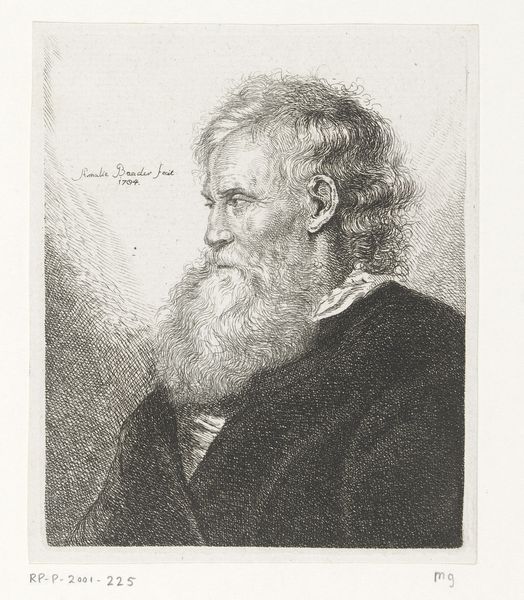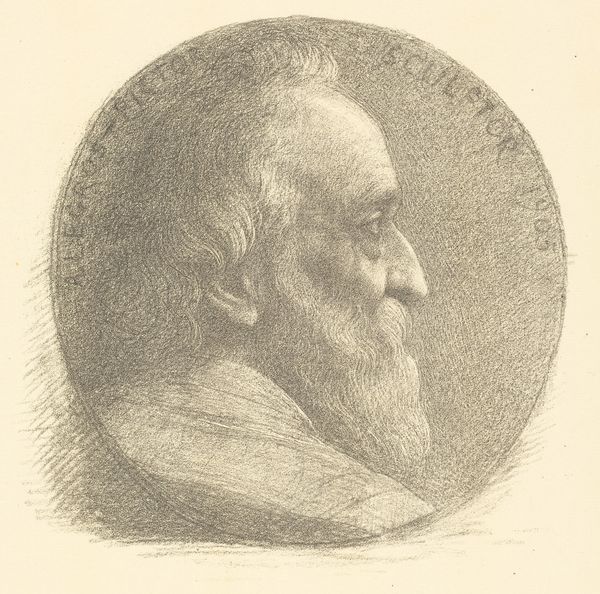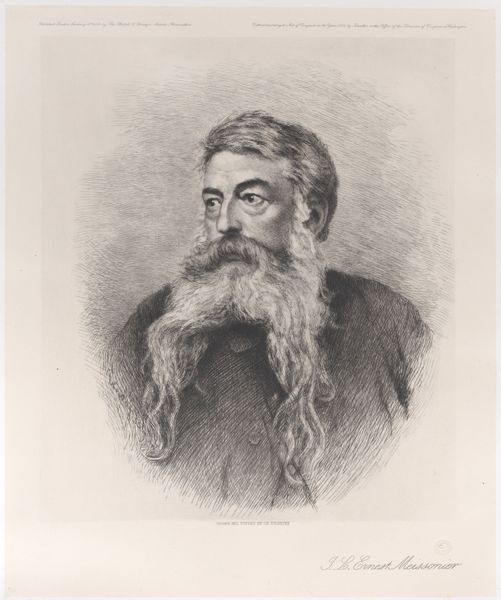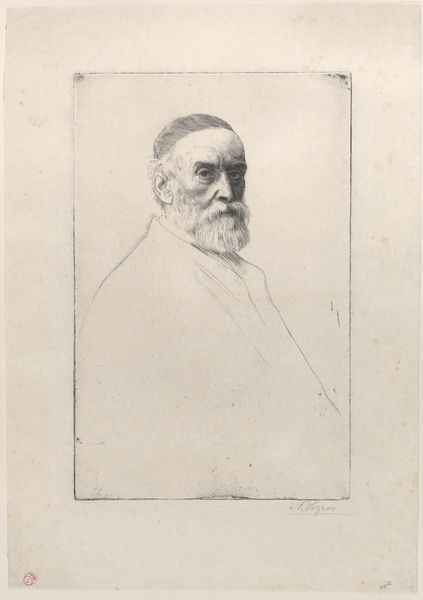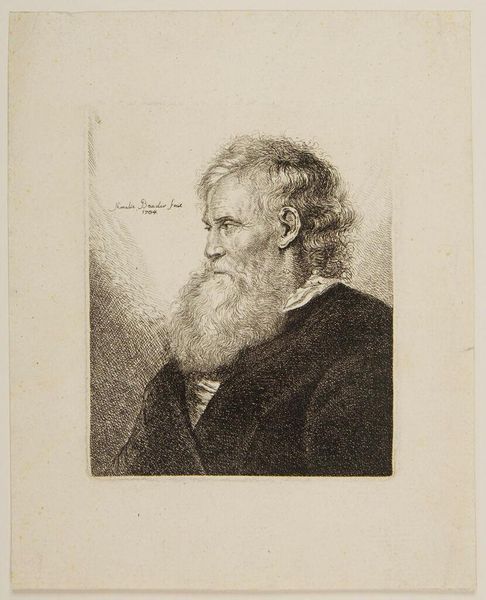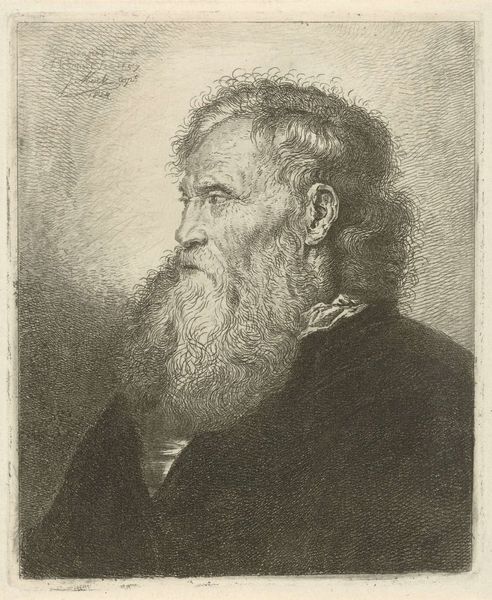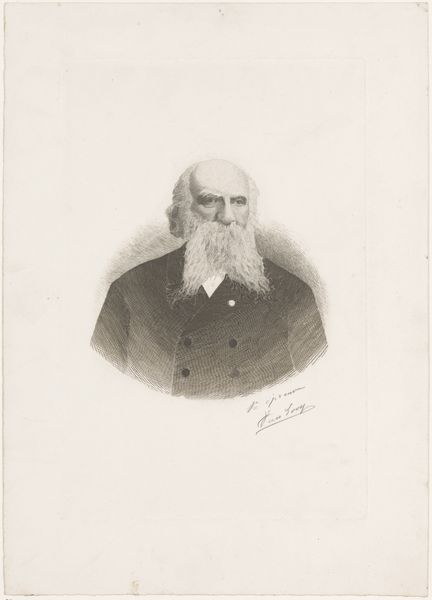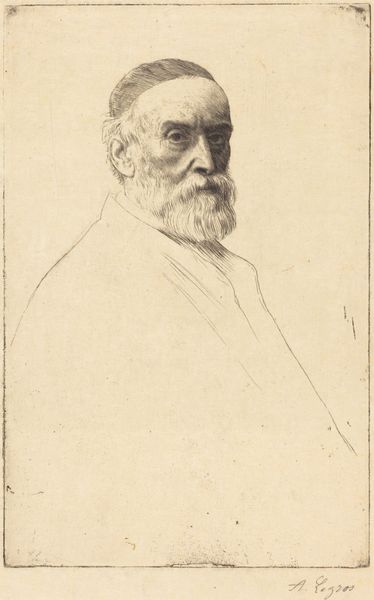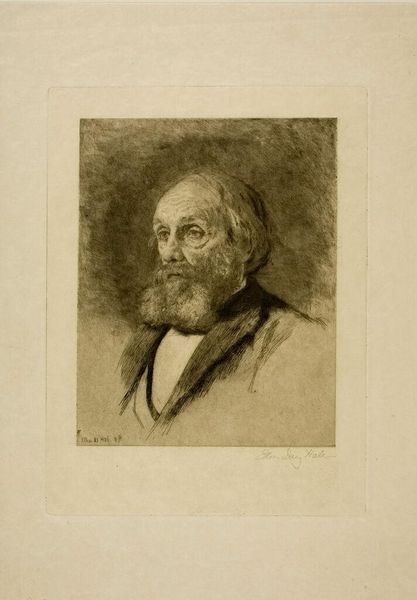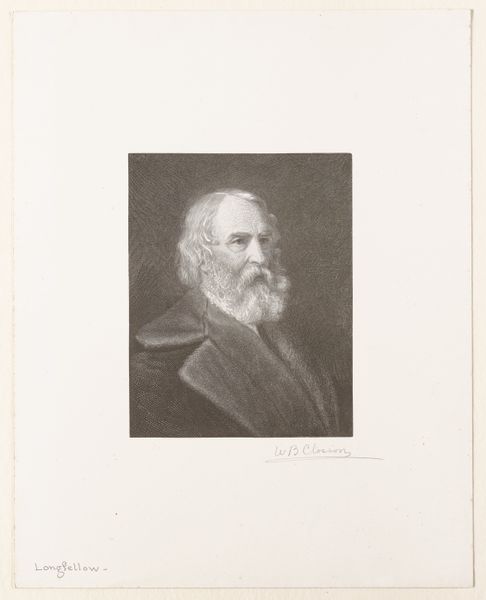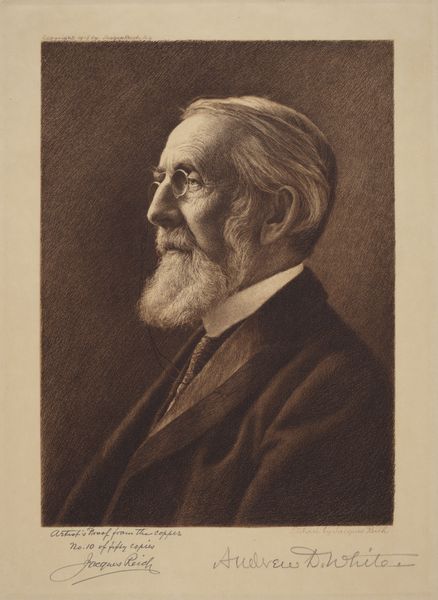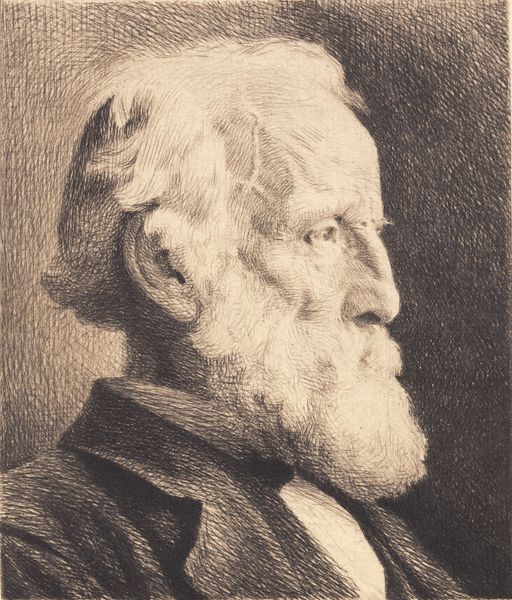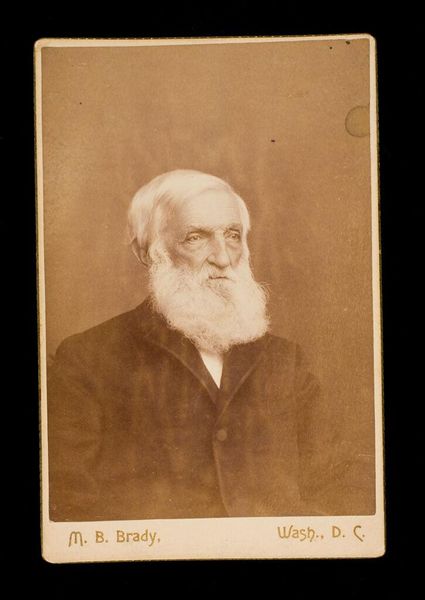
drawing, print, etching, paper
#
portrait
#
drawing
#
16_19th-century
# print
#
etching
#
paper
#
united-states
#
portrait drawing
Dimensions: 172 × 124 mm (image); 200 × 150 mm (plate); 320 × 249 mm (sheet)
Copyright: Public Domain
Curator: Well, this portrait drawing seems to project authority, maybe even a touch of that old-school righteousness? Editor: It does, doesn’t it? What we’re looking at is Max Rosenthal's "Portrait of Justice Stephen Field," created around 1890. Rosenthal was known for his prints and etchings, and this piece, now at the Art Institute of Chicago, is a prime example. It’s rendered in etching on paper. What sort of symbols do you think emanate? Curator: Law. Order. The Patriarchy. No, seriously, there's such weight to that flowing beard. He’s literally cloaked in power! The depth achieved through the etching is extraordinary – look at the light playing on his robes. It's like he's been bathed in history. But the hands—see how he clasps them? To me it seems it represents a kind of weariness or perhaps even internal struggle. Editor: The hands absolutely provide an element of the mortal, right? Often in portraits of important figures, like religious leaders or royals or those involved in law, hands can denote some aspect of morality, even divine blessing. And as Justice Field, he embodies the intersection of human and divine concepts, or even "moral" laws. But speaking of history, Stephen Field was quite a controversial figure. He served on the Supreme Court for over three decades. His interpretations of the 14th Amendment were landmark. Curator: So, Rosenthal captures him at the height of his influence. He clearly emphasizes the weight and perceived authority. Though, as an artist, I always wonder about the "silent dialogue" with the sitter. What unspoken understanding or tension colored the portrait's creation? Is Rosenthal admiring, critical, ambivalent? These things can bleed through, you know? Editor: An excellent point. The context of their interaction definitely shadows the image. And I suppose, considering the nature of his legacy in regards to civil rights and legal history, Rosenthal has rendered his understanding and position here with considerable and calculating artistic strength. Curator: Strength, indeed. A strength tinged, perhaps, with the knowledge that history always has more than one way of looking at a man. Editor: Leaving the viewers with a lingering curiosity regarding those weighing hands. Food for thought, indeed.
Comments
No comments
Be the first to comment and join the conversation on the ultimate creative platform.
